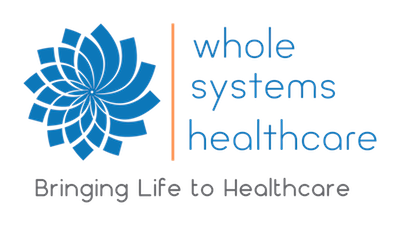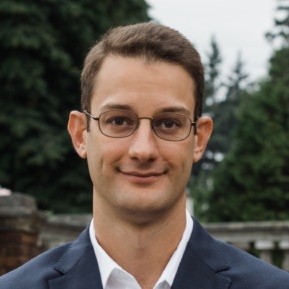Addiction rates are on the rise in the United States, with 40 million Americans age 12 and over (~1 in 7) meeting the clinical criteria for addiction involving nicotine, alcohol or other drugs—more than the number of people with heart conditions, diabetes, and cancer combined. Meanwhile, another 80 million Americans fall into the category of risky substance users, defined as those who use tobacco, alcohol and other drugs in ways that threaten public health and safety, but are not technically “addicted” according to conventional standards. Overdose deaths from opioids such as heroin or narcotic pills like Oxycontin, Percodan, and Methadone, have become the fastest growing drug problem throughout the U.S., and not just in large urban settings. In 2015, more people died from drug overdoses (~52,000 people) than from deaths attributed to motor vehicle accidents, homicides, and suicides. However, only one in 10 people with addiction to alcohol and/or drugs report receiving any treatment at all, compared to about 70-percent of people with hypertension or diabetes receiving treatment.
Most of us have been affected by addiction, whether we have dealt with addiction ourselves or from a loved one. For those who have dealt with severe addiction, they know that heavily addicted persons lose everything: their health, their wealth, their beauty, and their relationships. All too often, nothing can compel a heavily addicted person to give up their addiction, and the statistics show that our healthcare system is failing to sufficiently ask why this is the case.
Many people would say that addiction is caused by a substance that gives rise to a chemical dependency, usually with the connotation that continual use of the substance will cause harm to themselves or others. This is the basic principle underlying addiction Remove the chemical dependency, remove the addiction, right? Maybe it’s not so simple.
Gabor Mate, a Hungarian-born physician renowned for his work on addiction, believes that the idea that drugs cause addiction is “a myth”. He believes that “if we want to understand addiction, we need to look at what is right about it.” In other words, what is it that the person getting from the addiction that they otherwise would not have?
We have all felt the need to distract ourselves from our own minds by engaging in some kind of compulsive activity, such as working, listening to music, watching television, socializing, eating, or shopping. These behaviors are similar to addictive behaviors in that they give us a sense of temporary relief and pleasure, but differ in that for an individual to be truly addicted to a substance or activity, they cannot stop engaging it despite the fact that doing so has negative consequences, such as neglecting responsibilities or causing harm to their body, mind, or relationships. In this sense, shopping is not generally addictive, but to some people, it is; just as other forms of consumerism, food, sex, or even drugs and alcohol are not generally addictive, but to some people, they are. But why is it that some people become addicted, while others do not?
Experience has shown that addicted persons are almost always seeking transient relief from physical or psychological pain while attempting to find a sense of calmness, peace, and control. But why are these qualities missing from their lives to such an extent that they feel the need to seek them in harmful substances and activities? If we look at dangerous addictive substances, like morphine, codeine, alcohol, and heroin, we notice that they are all pain killers. So perhaps we are asking the wrong question when it comes to addiction. Instead of asking, why is this person addicted to this harmful substance, perhaps we should be asking, why is this person in pain and overwhelmed?
Compelling research is showing that chemical dependency on a substance, while real, is not what fundamentally causes and perpetuates addiction. Human beings have an innate need to bond and connect, but when we cannot connect with other human beings, whether due to a toxic or stressful environment, unresolved trauma, social developmental issues, a general lack of energy, or literal isolation, we will seek that experience of bonding elsewhere, such as in drugs or alcohol, compulsive smartphone, gambling, pornography, online gaming, or through watching Netflix. Therefore, according to research, addiction is less to do with the drug itself, and more to do with our innate human need to connect and bond—a need that seems to be becoming harder to fulfill in a wholesome way.
Adverse Childhood Experiences (ACE) Study
The Adverse Childhood Experiences (ACE) study is one of the largest investigations ever conducted to assess associations between childhood maltreatment and later-life health and well-being. More than 17,000 middle-class adults undergoing a comprehensive physical examination chose to provide detailed information about their childhood experience of abuse, neglect, and family dysfunction. To date, more than 50 scientific articles have been published and more than 100 conference and workshop presentations have been made based on these data.
The study has revealed a powerful relationship between our emotional experiences as children and our physical and mental health as adults, providing the most compelling empirical data to date that humans convert childhood traumatic emotional experiences into organic disease later in life. Traumatic life experiences in childhood are often forgotten from the conscious mind over time and then further buried and made inaccessible by feelings of guilt, shame, secrecy and by social taboos against inquiry into certain realms of human experience. A half-century later, those life experiences play out powerfully and proportionately in terms of emotional state, biomedical disease, and in terms of life expectancy.
The ACE study analyzed 10 categories of adverse life experience that were chosen because of their prevalence in participants of a highly effective weight-loss program: childhood sexual abuse; heavy-duty childhood physical abuse (far more than just spanking); major emotional abuse (i.e., recurrent humiliation); two categories of neglect; growing up in a home where one of the members of the household was chronically depressed, suicidal, mentally ill, or in the state hospital; growing up in a home without both biological parents; growing up in a home where one of the members of your household was alcoholic or a drug user; growing up in a home where mother was beaten; and growing up in a home where one of the members of your household was imprisoned during your childhood or adolescence.
These adverse life experiences in childhood are surprisingly pervasive but largely unrecognized. In a middle-class population, one in 11 people has experienced six or more of these adverse life experiences in childhood. However, these are issues that most people never even begin to resolve. At a so-called ACE score of six, experiencing any six of the 10 categories that were studied, that person was 4,600 percent more likely to become an intravenous drug user than a person who had experienced none of those 10 categories. The same ACE score of six produces a likelihood of attempting suicide that is between 3,100 percent and 5,000 percent greater than the likelihood of suicide attempts in someone with none of those life experiences. The power of this relationship is immense.
Ultimately the question arises: How do traumatic life experiences in childhood end up predisposing addiction issues (among other disease states) a half-century later? It seems that the answer may be found in the experience of isolation that occurs as a result of trauma through an inability to connect with others in a wholesome way. For example, infant mice who have had their endorphin receptors disabled and are separated from their mothers would not call for their mothers, while mice with intact endorphin receptors would. This is important because, in the wild, the baby mouse’s mother is fundamental to their survival and their only source of protection. Endorphins are morphine-like substances created within your brain that are often described as natural opiates of the body, or our “feel-good” chemicals. Endorphins flood the space between neurons, blocking neuronal firing and causing an analgesic effect, and so are often circulating during times of pain and stress, such as while exercising, when we’re injured, or when a person goes into labor. Endorphins are essential to our experience of love and bonding, such as our love and attachment to our parents or partners. Commonly addictive substances and activities act on endorphin receptors.
While much of neuroscience research is focused on genetic factors underlying predisposition to addiction, relationships with the environment are a significant determining factor in how the brain develops. For example, when we are abused or traumatized in youth, our endorphin system does not develop properly. Our brains then become susceptible to substances and activities that act on endorphin receptors because they provide a temporary relief similar to what other people might experience through a loving connection with another human being or nature. Children raised under conditions of abuse who lack love and connection from their caregivers carry lifelong deficiencies in generating the chemical reinforcement needed for healthy bonding and loving relationships, often in part due to an altered opioid sensitivity, predisposing them to addiction. Therefore, they seek this sense of connection elsewhere throughout their lives, such as in substances and activities that act heavily on their endorphin system, like heroin.
The first shot of heroin often causes significant discomfort in the form of nausea and vomiting. If someone is not scared away by their first experience (usually because of social and psychological pressures) the sought-after effects soon become obvious. They experience a rush and a high from the heroin suffusing their brain before it is distributed in the bloodstream and turned into morphine, landing them in a drowsy, comfortable, and contented state. Heroin users often describe this state as an experience of deep contentment, satisfaction, and loving connection, which likely underlies heroin’s highly addictive potential. Continual users will develop a tolerance to the intended effects and eventually only take heroin (or other opiates via cross-tolerance) to stave off extremely uncomfortable withdrawal symptoms.
The Paradox of Our Age
Most of us are familiar with the isolation paradox of our age: we feel more isolated today as a species than ever before, despite the fact that the internet and social media have caused a quantum leap in our ability to communicate and express ourselves on a global scale. Loneliness is emerging as a significant public health issue, as loneliness rates have significantly increased in recent years, and a recent review of studies determined that loneliness increases mortality rate by 26%. Changes in modern society, such as living in nuclear families, living in geographically distant locations from loved ones, and our growing reliance on social technology are some of the culprits, as our relationships might be more superficial and shorter-lived than in past generations. Loneliness particularly affects the elderly, often due to decreased mobility, loss of friends, and a wide-scale reduction in family communal living habits. As loneliness rates rise, we must ask how people are coping.
Some researchers and organizations are beginning to question whether the exponential increase in our use of electronics is worth the price of time lost connecting face-to-face with people and nature. As time goes on, it is becoming ever more convenient to sit alone while being entertained by electronics and images on a screen. As virtual reality technologies continue to evolve, fantasy realities and relationships will become more and more realistic, pleasurable, and addictive. Movies and video games are a fine way to occasionally spend a few pleasurable hours, but if one’s primary mode of interaction is through virtual reality, then something is wrong.
We are in the midst of a grand experiment, where infants and children are spending an unprecedented amount of time in front of screens. Children are “missing out” on outdoor, hands-on, face-to-face experiences that have traditionally been considered important to development, leading scientists to ponder the effects. Moreover, researchers are drawing correlations between increased social media use and drug and alcohol addiction among teens. In a survey conducted by the National Center on Addiction and Substance Abuse (CASA), they looked at Internet and drug usage patterns of teens ages 12 to 17. It was found that teens who used social networking sites (Facebook, Twitter, etc.) at least once a day were five times more likely to drink alcohol and three times more likely to smoke marijuana than those who used the sites less frequently. CASA argues that exposure to alcohol- and drug-related media is the reason behind the relationship, but their research also supports the notion that psychoemotional isolation and superficial relationships may be contributing to addiction.
Stigma toward mental health problems and addiction also plays a role in our isolation and is emerging as a significant public health. Stigma contributes to a high rate of preventable deaths and incarcerations, and drives existing mental health issues deeper, as isolated people who would otherwise seek care are left to destructive devices. Globally, more than 70% of people with mental illness receive no treatment from health care staff. The “war on drugs” we have been fighting for almost a century has made matters worse: instead of helping dependent people heal from their addictions, we cast them out of society, make it harder to get jobs, take away benefits and support, and literally put them in a cage through incarceration, isolating them even further. If the cure for addiction lies in replacing unhealthy bonds to substances and activities with wholesome ones, then would resources not be better spent primarily (or at least equally) on facilitating wholesome connections among people and nature?
With many severe addicts, the underlying cause for their addiction is apparent, being rooted in unresolved past trauma and abuse. As explained earlier, the trauma makes it more difficult or in some cases impossible to develop loving bonds, resulting in a state of inner isolation even when outwardly surrounded by other people. This feeling of isolation, of “emptiness”, is temporarily relieved through certain activities or the use of certain substances. However, since the 1950s, interesting correlations have been playing out in the U.S. as addiction rates have risen, such as the average number of close friends has reduced, while square footage in homes has increased. Americans are bonding with stuff – with careers, ambitions, status, “the grind”, television, consumer culture – over other humans because they are choosing not to and/or are less able to develop deep connections with other people and nature. Our convenience-, pleasure-, and results-obsessed culture carries a sense of emptiness, often overlooking meaning in the acts of creative exploration, rest, sadness, and appreciation of nature, while driving our ongoing attempt to fill that emptiness from somewhere outside ourselves.
Whole Systems Healing: Understanding Addiction to Power
Another study showed that mice genetically bred to lack dopamine receptors would eat when food was placed directly in their mouths, but when food was placed a few inches from the mice, they would not move to eat the food. The mice would rather starve to death than move a few inches to eat. Dopamine flows when we are motivated to do something, and acts on the nucleus accumbens, the reward center of the brain. Without dopamine, we lack motivation when seeking some kind of goal, such as attaining food, a paycheck, or a sexual partner. Dopamine, serotonin, oxytocin and endorphins are the quartet of chemicals involved in our sense of happiness, self-worth, and well-being. The things that motivate us provide rewarding experiences that give us a sense of identity and a role in the world. Therefore, dopamine and that which motivates us are intimately tied up with our sense of self-worth, our relationships, and our ability to connect with others.
Addiction to power is a real thing. Research has shown the feeling of being in power has a similar effect on the brain to cocaine by increasing the levels of testosterone and its by-product 3-androstanediol in both men and women. This leads to raised levels of dopamine acting on the brain’s reward system, which can be very addictive, providing biological evidence for the adage “power tends to corrupt, and absolute power corrupts absolutely.” Again, like all forms of addiction, why is it that power “corrupts”, or is addictive, to some and not others? Often times, individuals who have difficulties connecting with others while having a low sense of self-worth will attempt to bolster their identity through seeking power. There are many examples throughout history of deeply insecure people who relentlessly sought power at the cost of human life and welfare, such as Napoleon, Alexander, Stalin, and Hitler. These individuals sought power outside themselves to feed an internal emptiness, and much of their identity was wrapped up in being in power. If they were not in power, they had deep feelings of worthlessness and alienation.
Dr. Gabor Mate encourages us to not depend on people in power to change the world because they are very often (but not always) some of the emptiest people of all, as their egos have an insatiable desire for validation and approval, even if it must be accomplished through garnering negative attention. They simply cannot create the light the world needs. Common people who are committed to the betterment of the world must work through community-run initiatives to improve our collective well-being. In doing so on a large scale, leaders will notice that their constituency values peaceful progress, and will follow suit to some degree in order to maintain power. This is the mission of Whole Systems Healthcare includes the vision of our broader community to which we provide our services: To build a thriving integrative healthcare system built in the vision of holistic medicine clinicians, researchers, educators, and the communities they serve.



